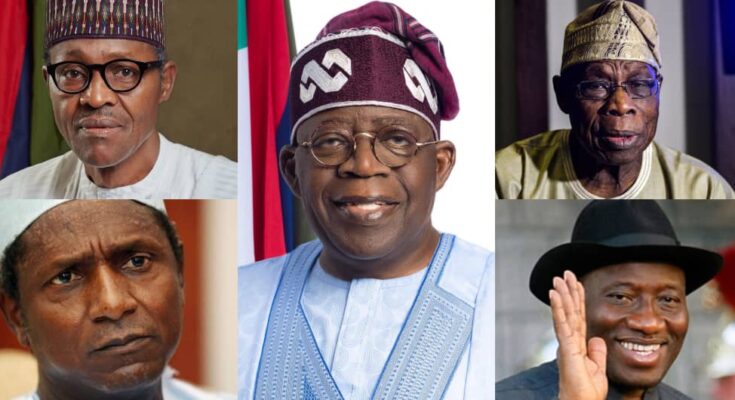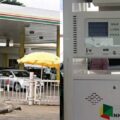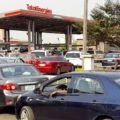Nigeria, since the return to democratic rule in 1999, has witnessed significant fluctuations in petroleum product prices, particularly the price of petrol. These adjustments have had a profound impact on the Nigerian economy, affecting transportation, power generation, and food prices. This article examines the historical context and fuel price changes under different regimes in Nigeria.
Olusegun Obasanjo: 1999 – 2007
During President Olusegun Obasanjo’s tenure, the price of petrol experienced several fluctuations. When Obasanjo assumed office in 1999, the price of petrol dropped from N25 to N20 per litre. However, fuel prices increased multiple times during his presidency:
- June 1, 2000: N20 to N30 (50% increase)
- June 8, 2000: N30 to N22 (26.67% decrease after protests)
- January 1, 2002: N22 to N26 (18.18% increase)
- June 2003: N26 to N42 (61.54% increase)
- May 29, 2004: N42 to N50 (19.05% increase)
- August 25, 2004: N50 to N65 (30% increase)
- May 27, 2007: N65 to N75 (15.39% increase)
Umaru Musa Yaradua: 2007 – 2010
During President Umaru Musa Yar’adua’s time in office from 2007 to 2010, there were no increases in the price of fuel. In fact, he made a decision to lower the price of petrol from N75 to N65 in June 2007. This reduction aimed to make fuel more affordable for Nigerians.
However , the decision to lower the price was implemented until January 1, 2012. This adjustment was made due to various factors, including the government’s need to manage its finances and ensure stability in the petroleum industry.
Goodluck Jonathan: 2010 – 2015
During President Goodluck Jonathan’s presidency from 2010 to 2015, there were three occasions when the pump price of fuel was changed. However, these adjustments were met with challenges and protests from oil marketers due to disputes over petrol subsidies.
The first adjustment occurred on January 1, 2012, when the price of petrol increased from N65 to N141 per litre. This significant increase sparked outrage among Nigerians. The government argued that the subsidy on petrol was unsustainable and needed to be reduced.
However, the decision to increase the fuel price led to nationwide protests and strikes by oil marketers. The protests caused disruptions in various sectors of the economy, as Nigerians expressed their dissatisfaction with the sudden rise in the cost of fuel.
In response to the widespread protests, the government reviewed its decision and on January 17, 2012, reduced the pump price from N141 to N97 per litre. This move aimed to address the concerns of the public and ease the financial burden on Nigerians.
The third adjustment took place in February 2015 when the pump price of petrol was further decreased from N97 to N87 per litre. This reduction was implemented in an attempt to alleviate the economic challenges faced by Nigerians.
During Jonathan’s presidency, Nigeria heavily relied on imported fuel, which made the country vulnerable to fluctuations in global oil prices. The subsidy on petrol and kerosene also became a significant financial burden on the government. It was reported that the administration spent over N6 trillion on fuel subsidies during his five-year tenure.
- January 1, 2012: N65 to N141 (116.92% increase)
- January 17, 2012: N141 to N97 (31.21% decrease)
- February 2015: N97 to N87 (10.31% decrease)
Muhammed Buhari: 2015-2023
During his presidency from 2015 to 2023, President Muhammadu Buhari made several changes to the price of petrol in Nigeria. In 2016, he increased the price from N87 to N143. Over the years, Nigeria has spent a significant amount of money on petrol subsidies. Between 2015 and 2020, the country committed $5.5 billion to these subsidies, and in 2021, $3.8 billion was spent. In 2022 alone, fuel subsidies cost Nigeria $9.7 billion, totaling $19 billion over the past seven years.
For this year, the Nigerian government allocated N3.4 trillion ($7.3 billion) for fuel subsidy expenditure until June, without provisions for the second half of the year. Despite calls from economists and analysts to remove subsidies to alleviate financial strain, previous governments have been reluctant due to fears of protests. Removing subsidies could potentially weaken people’s purchasing power, worsen inflation (which is already high), and increase the cost of living for Nigerians. In 2022, fuel subsidy as a proportion of GDP rose to 2.3%, up from 0.7% the previous year.
Regarding the specific changes made during Buhari’s presidency, here is a simplified breakdown:
- May 11, 2016: The petrol price increased from N87 to N145 (a 66.67% increase).
- March 19, 2020: The price decreased from N145 to N125.
- May 2020: The price further decreased to N121.50/N123.50.
- July 2020: The price increased to N140.80 (a 16% increase).
- August 2020: The price increased to N145.86.
- September 2, 2020: The price increased to N151.56.
- October 2020: The price increased to N161.
Bola Ahmed Tinubu: 2023 – Present
When President Bola Ahmed Tinubu took office in May 2023, he announced the removal of petrol subsidies. As a result, the price of petrol increased significantly, going up from N184 to over N500 per litre.
The increase has not stopped yet as it is currently selling at a price range between N617 and N630/litre. The increase in petrol prices has put a strain on people’s wallets and created challenges in managing their daily expenses.
Conclusion
Since the return of democracy in Nigeria in 1999, the country has witnessed several fluctuations in fuel prices, particularly petrol. These adjustments, often characterized by price increases, have had far-reaching implications for the Nigerian economy. The issue of fuel pricing and subsidies remains a contentious topic, impacting various sectors and the overall cost of living for Nigerians.








